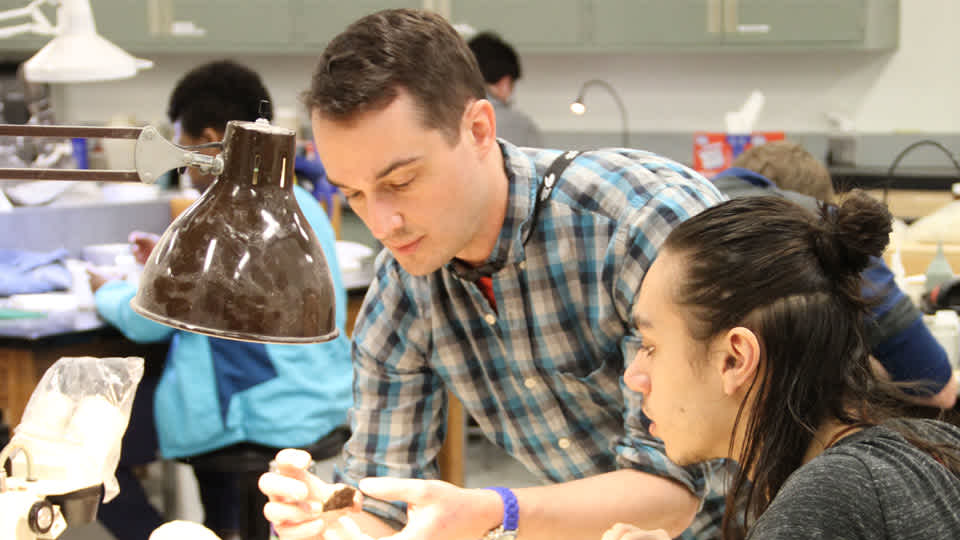
Meet Alex Hastings, Fitzpatrick Chair of Paleontology
What does bold science mean to you?
Bold science means risk taking. In a sense of not being afraid to explore areas that are not as well resolved. There is a lot of science where you can make a lot of great progress, but it’s fairly incremental—we didn’t know this bit, and now we do, with lots of work. Bold science is pushing yourself outside of your comfort zone and getting into things you’re not as familiar with and realizing that you can not only catch up to speed on those things and make new discoveries but that your own background in other areas can benefit you in ways you’d never anticipated.
I’ve collaborated with a group that was researching circulatory systems in crustaceans. I worked on another project with an ant biologist—all things I never thought I’d be doing—but there is a lot of common ground between these sciences. You can learn new and cool things by pushing yourself outside of your comfort zone.
How does your role at the Science Museum play a part in combating climate change?
Paleontology is a fusion of earth history and life history together. Understanding the relationships between evolution and climate over time is the biggest thing that I’m trying to do. Everything that I do, in some way or another, fits into this larger goal that we’re trying to address. The short end is that both evolution and climate change are extremely complicated, so every tiny finding we can add can help us understand the issues as a whole. It is also useful for learning what kinds of things to anticipate—which animals and plants will do well or less well in changing environments, and what impacts will climate change have on human lives as well?
What are the biggest opportunities for addressing climate change?
There are huge amounts of systems and daily actions that could be streamlined across whole communities. Things like moving to electric cars and making other environmentally-friendly choices, which aren’t currently supported by infrastructure—but if we got enough people on board, it could become the new norm—it could become what everybody does. This would help reduce greenhouse gases, reducing global warming. In my field, we have thousands of data points sitting in our collections vaults. All of these fossils provide several different kinds of records about how life has interacted with climate change throughout time. Sometimes it’s simply “What was where, when?” can make a huge difference. Body size, abundance, population dynamics, age—all of these other data points can be addressed with just one fossil. By connecting these fossil data sets, you can get a hugely robust record for addressing what is going to happen to the diversity of life once the world continues to warm. Will it affect life in the same way? What should we be focusing on? I view it as a largely untapped resource for addressing climate change.
How can paleontology inform us about today’s world?
Paleontology gives us the entire context of where we are today. Everything alive now has its own history that goes back sometimes millions of years. In order to understand what we have and why we have it, all you have to do is look into the past.
You also get a better appreciation of where we’re heading. Humans are newcomers to the scene in terms of life here on Earth, and the rapid expansion we’ve had across the world in a short amount of time, if the trajectory continues it will be overwhelming. There are a lot of things we could learn by looking at successful populations over time, by delving into the past, to help us maintain the world that we have today.
What advice would you give to young people who want to become scientists?
Stay curious. Get into the natural world as much as you can - get outside! Just experience it for yourself, in your backyard, in parks, anywhere.
Tell us about your favorite extinct species and why it's your favorite.
It’s the Therizinosaurus! Because they’re so weird.
It has these massive death claws that are multiple feet long, but it was likely an herbivore. If anyone is familiar with the giant ground sloth, it’s like the dinosaur version of that. They’re these weird, clunky, animals that have these massive hands which would have been used mostly for defense and ripping branches down. There is a whole group of these Therizinosaurs that got to be around 13 feet tall, and I love them for how delightfully weird they are.